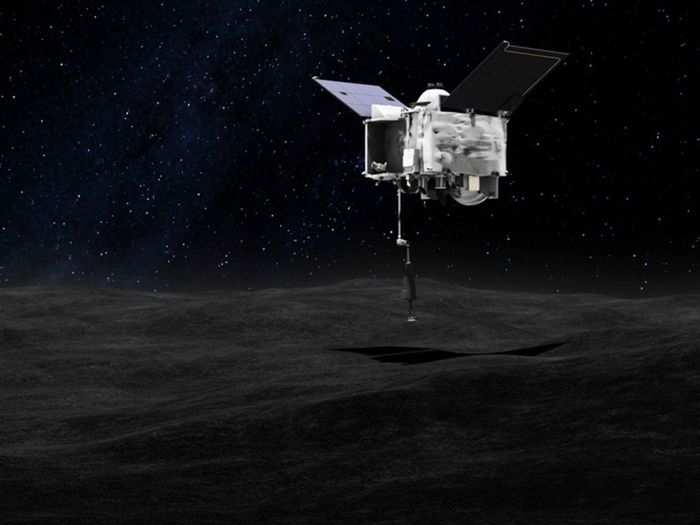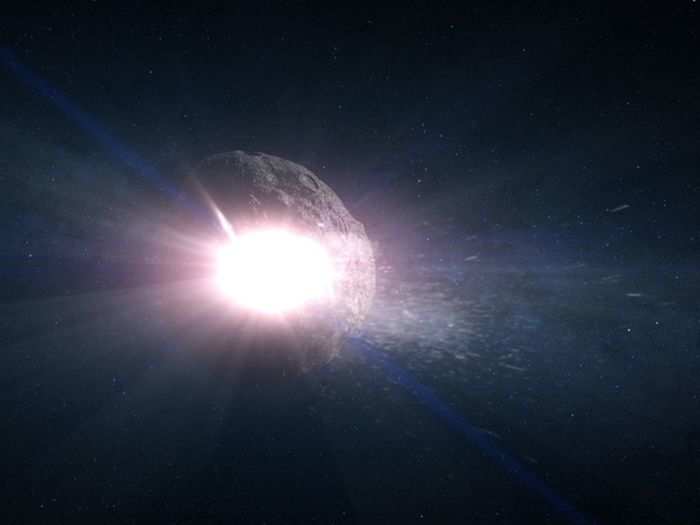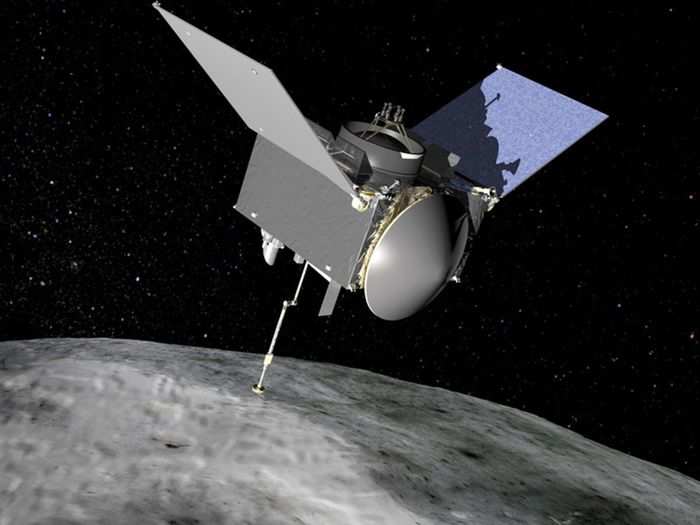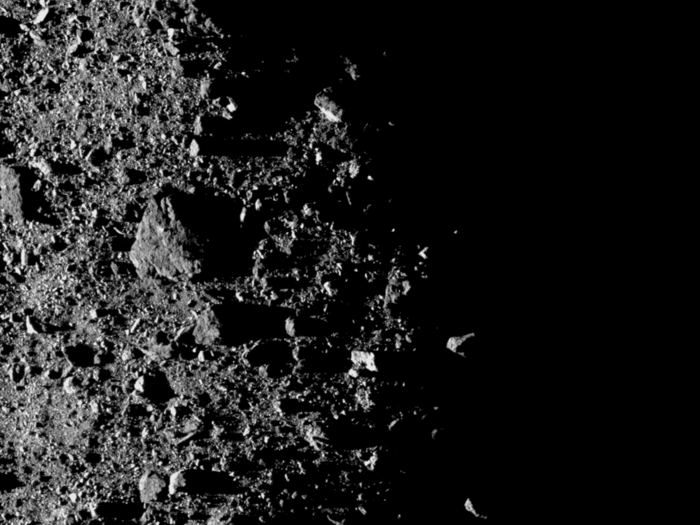Artist's concept of NASA's OSIRIS-REx returning to Earth after collecting sample from Asteroid Bennu NASA
- The National Aeronautics and Space Administration (NASA) has uncovered six new facts about Asteroid Bennu ahead of its snatch and grab on October 20.
- The uneven gravity around the asteroid suggests that there may be a massive void under the surface.
- Scientists have also found two types of boulders on Asteroid Bennu — neither strong enough to survive the journey through Earth’s atmosphere.
Landing on an uncharted territory can be scary. Still, the National Aeronautics and Space Administration’s (NASA) asteroid probe —
OSIRIS-REx — knows
at least six things about Asteroid Bennu as it gets closer to making its snatch and grab.
Officially called the Touch-and-Go (TAG) maneuver, the spacecraft will land on the asteroid for a few seconds and collect a sample of rocks and dust before making its way back to Earth. Right now, OSIRIS-REx is less than two weeks away from making its first attempt scheduled for October 20.
Ahead of the mission, NASA has already started to unlock some of Asteroid Bennu’s secrets. In a special collection of six papers published today in Science and Science Advances, scientists share six things they already know they will find on the rocky surface.
Here’s the full list of six things that NASA has unlocked about Asteroid Bennu:
1. Carbon-bearing, organic material is widespread on the asteroid’s surface
Artist’s concept shows the OSIRIS-REx mission collecting sample from Asteroid Bennu NASA
What does this mean?
This indicates that whatever sample is collected by NASA’s probe will likely include hydrated and organic material present at the landing site — Nightingale.
2. Carbonate minerals make up some of the asteroid’s geological features
Artist’s concept shows Scientists think Bennu breaking away from its larger parent body NASA
What does this mean?
Several Asteroid Bennu’s boulders have bright veins that seem to be made of carbonate. More importantly, some of them appear close to the Nightingale crater. It means some carbonates might be present in the returned sample.
This discovery has led scientists to theorise that the parent asteroid, destroyed long ago, likely had an extensive hydrothermal system, where water interacted with and altered rock.
3. OnOSIRIS-REx’s landing site — Nightingale — the regolith has only recently been exposed to the harsh environment of space
Artist’s concept shows the OSIRIS-REx spacecraft collecting a sample from Asteroid Bennu NASA
What does this mean?
According to NASA, Nightingale is part of a population of young, spectrally red craters, and the sample collected by the probe will be some of the most ‘pristine material’ on the asteroid.
Asteroid Bennu is covered in many colors along the visible-wavelength spectrum — much more diverse than initially anticipated. This shows how combinations of different materials were inherited from Bennu’s parent body and how some places have been exposed to space for different durations, at other points of time.
4. There are two main types of boulders on Asteroid Bennu’s surface — commonly dark and rough with bright and smooth boulders being more rare
Bennu and other asteroids represent building blocks of our solar system’s rocky planets NASA
What does this mean?
The different types of boulders may have formed at different depths in the parent asteroid of Bennu.
5. Asteroid Bennu's dark boulders are weaker and more porous, whereas smooth boulders are stronger and less porous — both weaker than expected
MapCam View of Bennu's north pole from orbit NASA
What does this mean?
Since both the boulders are weaker than expected, neither would survive the journey through Earth’s atmosphere.
“It’s therefore likely that the returned samples of asteroid Bennu will provide a missing link for scientists, as this type of material is not currently represented in meteorite collections,” NASA said in a statement.
Data obtained by the OSIRIS-REx Laser Altimeter (OLA) also shows that the northern and southern hemispheres have different shapes.
The southern hemisphere appears to be smoother and rounder, which the scientists believe is a result of loose material getting trapped by the region’s numerous large boulders.
6. Gravity field analysis of Asteroid Bennu shows its interior isn’t uniform
'Super-resolution' view of asteroid Bennu created using eight images obtained by NASA’s OSIRIS-REx spacecraft on 19 October 2018 from a distance of about 330 km NASA
What does this mean?
It means that there could be a hole at the centre of the asteroid. Data shows that there are pockets of higher and lower density material inside the asteroid.The hypotheses void is likely to be at least as big as a couple of football fields.
In addition, the bulge at Bennu’s equator is under-dense, suggesting that Bennu’s rotation is lofting this material.






